How to Increase ROAS: A Consultant's Playbook
- Chase McGowan

- 1 day ago
- 14 min read
Getting a better Return on Ad Spend (ROAS) is straightforward in theory: you either make more money from your ads or you cut campaign costs without tanking your sales. The goal is to maximize the revenue from every single dollar you put into advertising.
But if it were that easy, everyone would be doing it. A lot of businesses get stuck here, often because the strategy they're paying for lacks a truly expert touch. They're trapped in a relationship with a bloated, overpriced agency that isn't built for their success.
Why Your Agency's ROAS Strategy Is Failing
Ever feel like you’re just throwing money into a black hole? You see the agency reports filled with impressive-sounding numbers, but your actual profitability isn't budging. If your ROAS has flatlined, you're not alone.
The root of the problem often lies in the structure of big-box advertising agencies. They're built for volume, not for the kind of dedicated, expert management that gets real results. Your account—the lifeblood of your business—is often just one of dozens being managed by a junior employee. They’re applying the same generic playbook to everyone, focusing on vanity metrics like clicks and impressions instead of what really moves the needle: your profit.
It's an approach that's broken from the start, and it costs you money every single day.
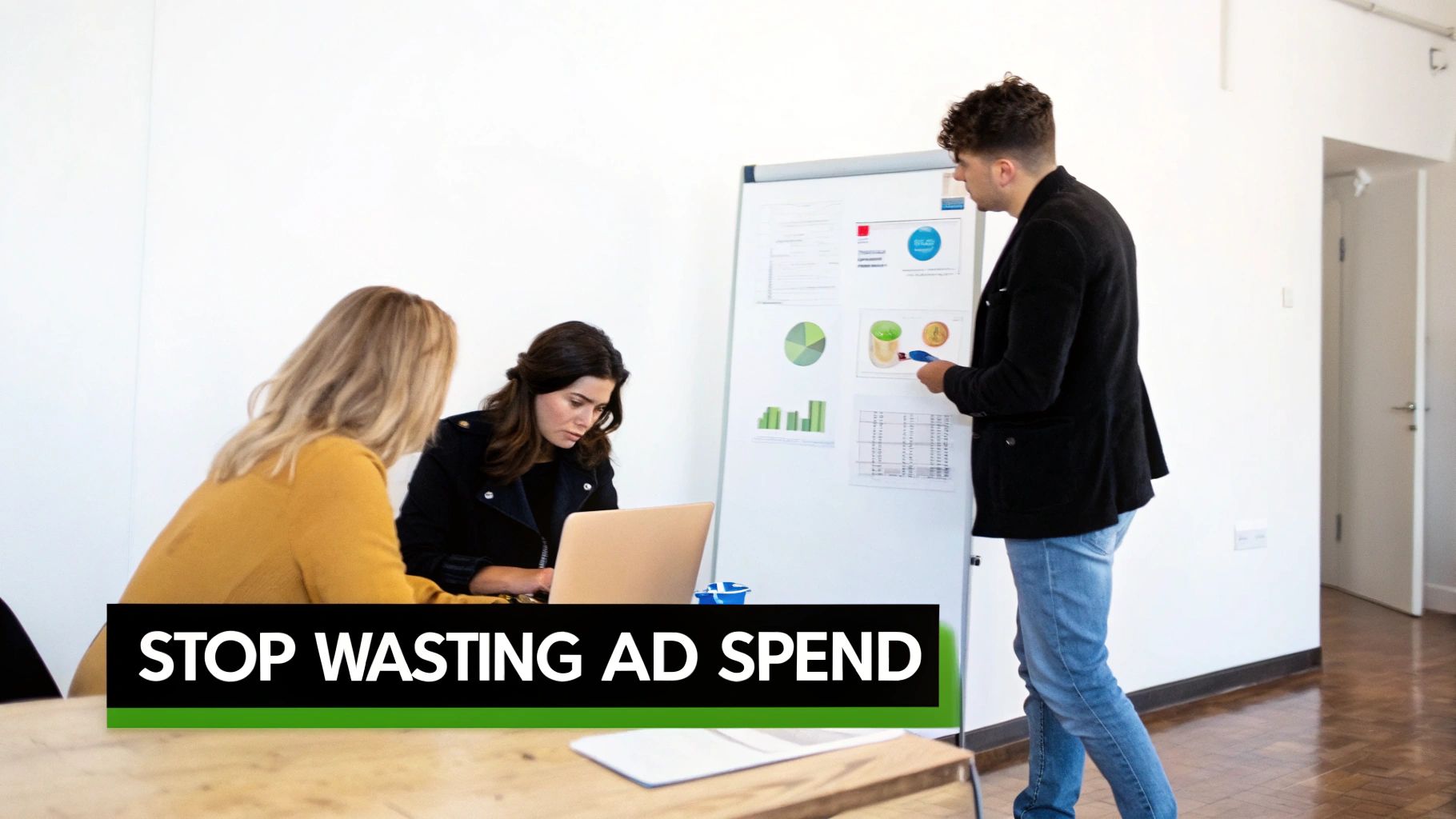
The Disconnect Between Agency Actions and Business Goals
This all starts with a fundamental misalignment. An agency’s main objective is often to keep you as a client and sell you more services. That's not always the same as maximizing your profitability.
Here’s a closer look at how this impersonal model quietly eats away at your bottom line:
Template-Based Management: Instead of a custom strategy, your campaigns get shoehorned into a pre-built template. This completely ignores what makes your products, audience, and profit margins unique.
Junior-Level Execution: An inexperienced account manager is far more likely to blindly accept Google's automated recommendations. Remember, Google's goal is often to get you to spend more, not necessarily to improve your ROAS.
Focus on Surface Metrics: They'll proudly report on high click-through rates and impression counts. Why? Because those numbers are easy to boost and can distract from the real issue—a poor return on your investment.
The big difference with an individual expert consultant is that my success is directly tied to your success. There are no layers of management or bloated overhead. It's just one person, a specialist, laser-focused on getting you profitable results.
This kind of hands-on, specialized approach is about more than just tweaking a few settings. To truly break free from a failing ROAS, you need to dig deep into proven top conversion rate optimization strategies.
While the average ROAS across industries is around 2.87:1, a solid benchmark for most eCommerce businesses is closer to 4:1. Hitting that number—and going beyond it—takes a dedicated expert, not an agency assembly line.
Mastering Your Audience and Keywords
Every high-performing Google Ads campaign is built on a rock-solid foundation, not guesswork. This is where the meticulous, hands-on approach of a dedicated consultant completely outclasses the typical agency model. It’s about doing the granular, unglamorous work that bloated agencies often skip because it just doesn’t scale easily across dozens of clients.
Agencies often cast a wide net with generic keyword lists, hoping to catch a few good leads along the way. That strategy almost always wastes your budget on clicks from people who are just browsing or are completely unqualified. In contrast, as an expert consultant, I focus on forensic-level keyword research, digging deep to find the high-intent, long-tail phrases your competitors are totally ignoring.
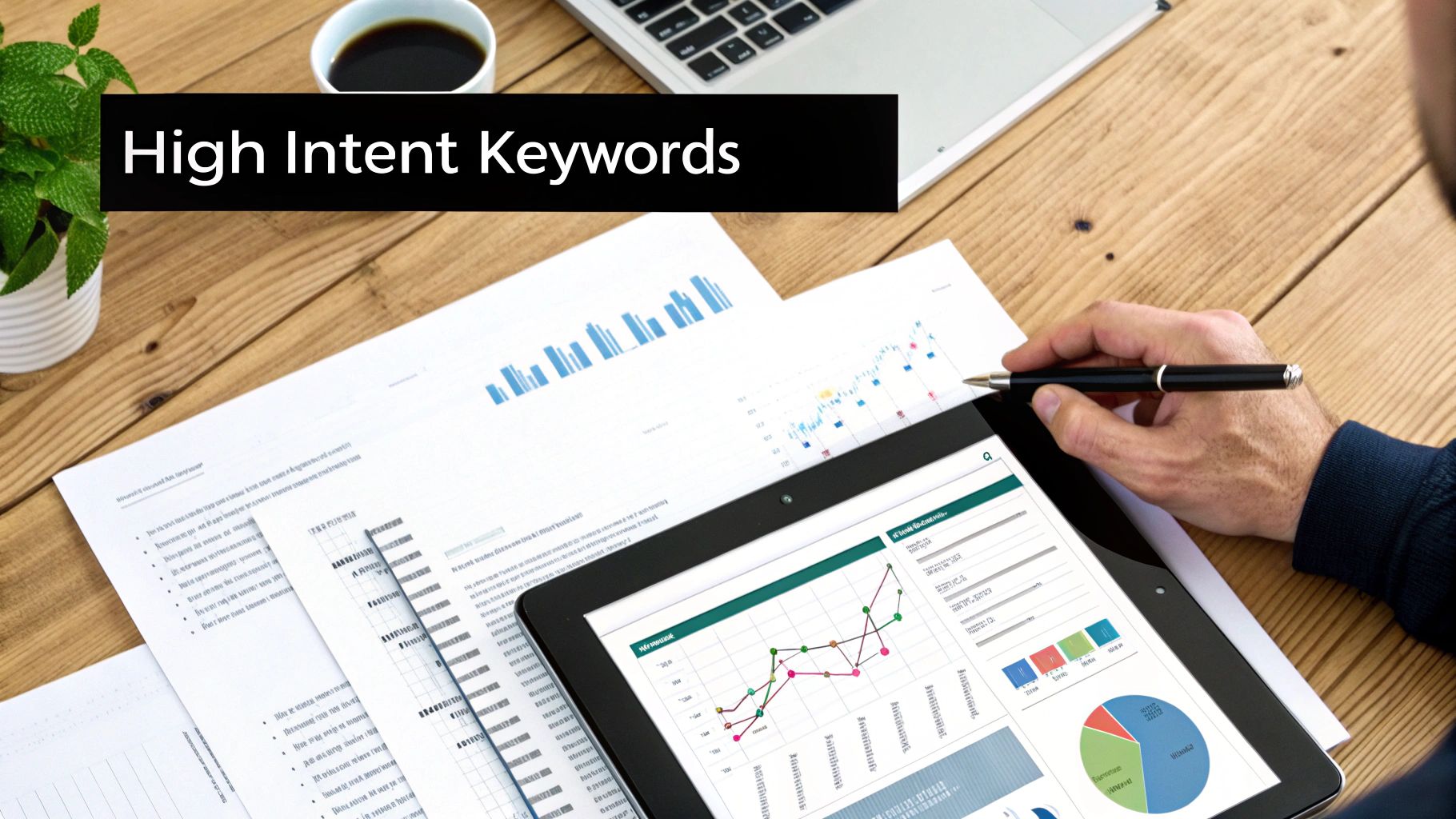
This obsessive attention to detail is what separates a profitable campaign from a money pit. It's not just about what you bid on; it’s about what you don't bid on.
Building Your Campaign with Precision
The first order of business is to stop the campaigns from bleeding money. That means building an aggressive and constantly evolving negative keyword list. Think of it as your campaign’s bouncer, turning away irrelevant traffic at the door before it ever costs you a dime.
An agency might add a few obvious negative keywords at launch and call it a day. A consultant, on the other hand, lives in your Search Terms Report, identifying and blocking wasteful queries daily.
For example, if you sell high-end "leather briefcases," you absolutely don't want your ads showing up for searches like "cheap faux leather briefcases" or "how to repair leather briefcases." Every single click from those queries is money down the drain—a small leak that quickly becomes a flood when managed by a disconnected, volume-focused agency.
The goal isn't just to find good keywords; it's to build a fortress around them. By creating hyper-specific ad groups and aggressively filtering out irrelevant traffic, you ensure every dollar is spent reaching someone who is actively looking to buy what you sell. This is the detail-oriented work agencies can't afford to do.
This detailed work is a direct path to a higher ROAS because you’re only paying to reach the most qualified buyers from the get-go.
The Art of the Customer Avatar
Keywords tell you what people are searching for, but a deep understanding of your audience tells you why they're searching in the first place. This is another area where a personalized consulting approach shines. I don't just glance at basic demographics; I build out detailed customer avatars.
This means mapping the entire customer profile:
Pain Points: What specific problems are they desperately trying to solve with your product?
Motivations: What are the emotional triggers behind their purchase decisions?
Online Habits: Where do they hang out online when they aren't looking for you?
Objections: What hesitations or fears might stop them from hitting "buy now"?
This level of detail is gold. It lets me create powerful custom audiences and in-market segments that go far beyond Google's default options. When you truly understand who you’re talking to, you can craft a message that resonates on a personal level, making your ads feel less like interruptions and more like the perfect solution.
For a deeper dive, check out this consultant's guide to Google Ads audience targeting for some more advanced strategies. This is the kind of precision that transforms a good campaign into a truly profitable one.
Crafting Ad Copy and Landing Pages That Actually Convert
Getting someone to click your ad is just the first step. The real magic—and the part that actually boosts your ROAS—is turning that click into a paying customer. I’ve seen big agencies treat ad copy and landing pages like they’re on different teams, and the result is always a clunky, disjointed experience that sends potential customers running.
To me, they're two sides of the same coin. Think of it as a single, continuous conversation that starts with your ad and naturally flows all the way to a sale.
This is where you need to get into the psychology of your customer. Your ad copy can’t just be a catchy slogan; it has to hit on a specific pain point. It’s about creating an instant connection. I ditch the generic templates and stick to a simple, powerful framework: problem, agitation, and solution. First, you call out the problem they're dealing with. Next, you poke at it a bit, highlighting why it's so frustrating. Finally, you introduce your product as the obvious answer.
The Unbreakable Bond Between Your Ad and Landing Page
That seamless feeling has to carry over the second they hit your landing page. A common agency shortcut is to dump all traffic onto a generic homepage or use a one-size-fits-all landing page for every client. This is a massive, ROAS-killing mistake. Your landing page must be a direct continuation of the promise made in your ad.
For example, if your ad shouts about a "50% discount on waterproof hiking boots," that landing page better have those boots front and center with the discount impossible to miss. Any hint of confusion or an extra click to find the deal, and they're gone. You just paid for a click that went nowhere.
The secret sauce here is message match. Your headline, your images, and your offer have to be perfectly consistent from ad to page. This isn't just a "best practice"—it's the bedrock of any funnel that actually converts, and it’s something agencies often overlook in their rush to scale.
This is where having an expert's eye on the details pays off. I make sure every ad group points to a dedicated landing page that mirrors its exact messaging. It creates a frictionless path from interest to action.
The Anatomy of a High-Converting Page
Once you've nailed the message match, the landing page has to do the rest of the work. After you've dialed in your keywords and audience, this is the next place you can either make or lose a ton of money. There's a whole science behind how to optimize landing pages for conversions.
Here are a few non-negotiables I build into every page:
A Crystal-Clear Call-to-Action (CTA): Don't make people hunt for the next step. A single, obvious button like "Buy Now" or "Get Your Free Quote" is all you need.
Trust-Building Social Proof: People trust other people. Show off your best customer reviews, testimonials, and any trust badges right where they can see them. It instantly validates their decision to consider you.
Benefit-Driven Headlines: Don't just list features. Focus on what the customer gets out of it. How does it make their life easier, better, or more enjoyable?
Getting these elements right is a game-changer. For a much deeper dive into this, check out our guide on how to build high-converting landing pages that win.
Finally, it helps to know what’s possible. Industry benchmarks show just how much ROAS can vary. A 2022 analysis, for instance, showed the appliances sector pulling in an average of $3.63 for every ad dollar spent. Meanwhile, sports and outdoors products were way up at $4.98—a nearly 5:1 return. These numbers prove how much your category and customer buying habits can influence your results. You can find more of these insights about industry-specific ROAS on TheBrandAmp.com.
Advanced Bidding and Budgeting Strategies
This is where a specialist truly outshines the agency pack. Forget setting a budget and letting Google's automated systems run wild on their own. Big agencies often love a "set it and forget it" approach because it’s efficient for them, not because it’s profitable for you.
They’ll frequently default to an automated bidding strategy without the critical data or strategic oversight needed to make it work. The result? Your budget gets burned on unqualified clicks before you even know what happened.
A hands-on consultant, however, treats your budget like it’s their own. I know that real ROAS gains come from making surgical, data-driven decisions every single day. The key is understanding the nuanced world of Google's bidding systems and, more importantly, knowing when to take the wheel.
Taking Control of Your Ad Spend
Relying solely on automated strategies without enough conversion data is like letting a new driver use cruise control in rush hour traffic. It's a recipe for disaster. As an expert, I know when to switch to manual bidding to maintain absolute control over cost-per-click, especially in hyper-competitive or low-volume campaigns where every single click has to count.
On the flip side, I also know when to strategically deploy automated bidding like Target ROAS. But here’s the crucial difference: I ensure the system is fed with a bare minimum of 30-50 conversions over the last 30 days before even thinking about flipping that switch. This gives the algorithm enough solid data to make intelligent decisions, preventing it from learning on your dime.
For a deeper dive into these options, you can explore the top Google Ads bidding strategies you need to know for 2025 to see which one really aligns with your business goals.
The core advantage of a specialist is knowing precisely when and why to choose a particular bidding strategy. An agency often picks what's easiest for them; a consultant picks what's most profitable for you. This distinction is fundamental to increasing ROAS.
This decision tree shows a simplified diagnostic process for ads that aren't converting—one of the most common reasons for poor ROAS.

As you can see, strong ad copy is just the first domino. Aligning it with a highly relevant, conversion-focused landing page is absolutely crucial for turning that click into a customer.
This table breaks down the key operational differences between a typical large agency and an individual consultant, highlighting how each approach directly impacts your Return on Ad Spend.
Agency Model vs Consultant Model: A ROAS-Focused Comparison
Ultimately, the consultant model is built for agility and precision, which are the two things you need to consistently drive a higher ROAS.
Surgical Budget Adjustments
Beyond just the bidding strategy, a dedicated consultant digs much deeper into your performance data to make precise adjustments that agencies almost always miss. This isn't about making sweeping, broad-stroke changes; it's about finding those hidden pockets of profitability.
This involves a meticulous, ongoing analysis of performance segmented by key variables:
Device: Are mobile users converting at a lower cost than desktop users? If so, I'll apply a positive bid adjustment to prioritize that valuable mobile traffic. It's a simple tweak that can make a huge difference.
Time of Day: Let's say your data shows that sales spike between 9 AM and 12 PM on weekdays. I can increase bids during that profitable window and strategically pull back during quieter periods to save money.
Location: An agency might target an entire state and call it a day. A consultant, on the other hand, will analyze performance by city or even zip code, shifting budget away from underperforming areas and doubling down on the hot spots.
These granular adjustments are exactly how you systematically and sustainably increase ROAS. It’s a continuous process of redirecting your budget away from what’s not working and pouring it into what is—a level of detail and commitment you simply won't get from an overburdened, multi-client agency account manager.
Looking Beyond ROAS to See Real Profit
A high ROAS number on your monthly report feels great, but does it actually mean your business is making money? It's a surprisingly common trap. Too many businesses—and the agencies serving them—chase impressive-looking metrics while completely ignoring the actual bottom line. They're celebrating revenue but forgetting about the costs that eat into it.
The core issue is simple: revenue isn't profit. A 3:1 ROAS might look decent on paper, but if your product margins are only 25%, you're actually losing money on every single sale you generate through ads. This is where I see the biggest disconnect, and it's the first thing I tackle with any new client.
My job isn't just to bump up your ROAS. It's to figure out what a profitable ROAS looks like for your specific business. This level of business-first thinking is something you rarely get from big, cookie-cutter agencies that hand your account to a junior manager running a dozen others.
First, Calculate Your Break-Even Point
Before you can start optimizing for profit, you have to know where the floor is. Your break-even ROAS is the absolute minimum you need to make back just to cover your ad spend and the cost of the goods you sold. Anything less, and you're in the red.
The formula is dead simple: 1 / Your Profit Margin.
Let's say your profit margin is 20% (or 0.20). Your break-even ROAS is 1 / 0.20, which equals 5. That means you need to generate $5 in revenue for every $1 spent on ads just to avoid losing money. Suddenly, that 4:1 ROAS that looked pretty good is a confirmed failure.
This one calculation changes everything. It reframes your entire campaign strategy, moving the goalpost from an arbitrary number to genuine profitability.
Focusing solely on ROAS without understanding your margins is like celebrating how fast your car is going while ignoring that you're driving toward a cliff. True campaign success is measured in profit, not just revenue.
While ROAS is a solid metric for ad performance, it doesn't give you the full picture. For instance, a campaign might generate $160,000 in revenue from $75,000 in ad spend, giving you a ROAS of about 2.13:1. Looks okay, right? But once you factor in the total marketing budget—like costs for lead nurturing and support staff—the return on investment (ROI) can sink to a measly 6.7%. As you can see from data on ROAS and profitability from First Page Sage, gross revenue can be very misleading.
The Real Game-Changer: Customer Lifetime Value
The next strategic layer is to think beyond that first sale. Sometimes, a campaign with a seemingly low ROAS is actually your most valuable asset because it brings in customers with a high Customer Lifetime Value (LTV). These are the people who come back to buy again and again, fueling your long-term growth.
Most agencies don't track this. Why? Because they're laser-focused on that initial conversion—it’s quick, easy, and looks good on a report. My approach is different. I dig deep to find out which campaigns, keywords, and ads are attracting customers who stick around.
Here’s how I uncover that data and put it to work:
Track What Happens After the Click: I go beyond the conversion and analyze which groups of customers are making repeat purchases.
Segment Audiences by LTV: Once we identify your best customers, I can build powerful remarketing lists and Lookalike Audiences from them.
Bid Smarter, Not Just Higher: We can then justify paying a little more to acquire a new customer if we know they're likely to have a much higher lifetime value.
This is how you turn a simple ad account into a sustainable profit engine. It's a strategic shift that requires a deep, personalized analysis—the kind you just don't get from a large, impersonal agency.
Common Questions I Hear About Improving ROAS
When you're running a business, you have real, practical questions about what's working with your Google Ads and what isn't. Let's tackle some of the most common ones I hear from clients, because the answers often highlight the difference between just spending money and actually making it.
"I'm Getting a 2:1 ROAS. Is That Good?"
In my experience, a 2:1 ROAS is rarely good enough. Honestly, for most businesses, it means you're likely losing money once you account for your cost of goods, shipping, and all the other operational costs that keep the lights on.
The industry-wide average ROAS might be around 2.87:1, but averages don't pay the bills. The only number that matters is your break-even point. That's why the first thing I do with any new client is a deep dive into their profit margins to figure out their specific break-even ROAS. From there, we build a strategy to hit a target that actually grows the business. For the e-commerce brands I work with, we're almost always aiming for a 4:1 ROAS or higher to ensure every dollar spent is a true win.
"How Is What You Do Different from Just Following Google's Recommendations?"
This is a fantastic question because it gets right to the heart of the matter. Google's automated recommendations are built with one primary goal in mind: getting you to spend more money on their platform. They're a decent starting point, but they operate in a vacuum, with zero understanding of your business, your profit margins, or your long-term goals.
An experienced consultant brings the human element—the business context—that an algorithm can't. I'm not just looking at clicks and impressions; I'm using years of in-the-trenches experience to interpret that data through the lens of your business. I know when to trust the data, when to test a new theory, and, just as importantly, when to tell Google's recommendations to take a hike. My job is to make sure your budget drives profit, not just activity.
The real difference is whose side we're on. Google's recommendations serve Google's revenue goals. My recommendations, as your consultant, are 100% aligned with your profitability goals.
"How Long Until I See a Real Bump in My ROAS?"
You'll see some quick wins right away, often within the first week, just by plugging the most obvious budget leaks. But building a stable, scalable, and genuinely profitable campaign is a process. You should expect it to take about 60-90 days to see a significant and lasting increase in your ROAS.
Here’s what that timeline usually looks like:
Month 1: We're in deep-dive mode. I'll be completely restructuring the account, cleaning up the mess, and setting up a solid foundation to gather clean, actionable data.
Month 2: This is where the fun begins. Armed with the initial data, we start aggressively optimizing—tweaking bids, refining audiences, and testing ad copy to see what resonates.
Month 3: By now, the fog has cleared. We have a solid understanding of what's driving results, and we can start confidently scaling the campaigns that are making you the most money.
This isn't about quick fixes that fizzle out. It's about building a powerful, sustainable engine for growth.
Ready to stop guessing and start getting profitable results from your Google Ads? As a dedicated consultant, Come Together Media LLC brings the specialized, hands-on expertise you won't find at a big, bloated agency. Let's build a strategy that's actually designed for your business goals. Book your free, no-obligation consultation today.




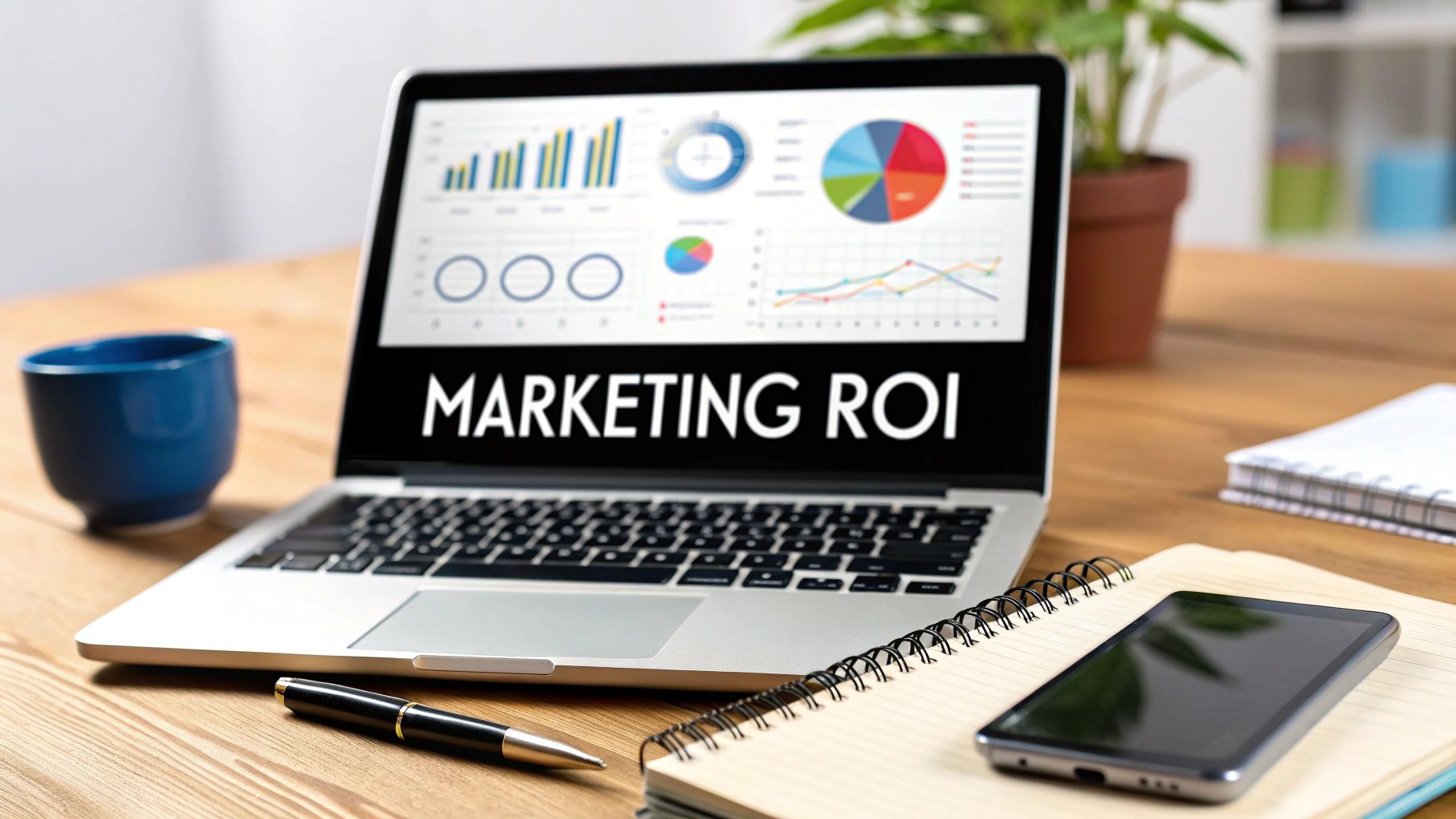
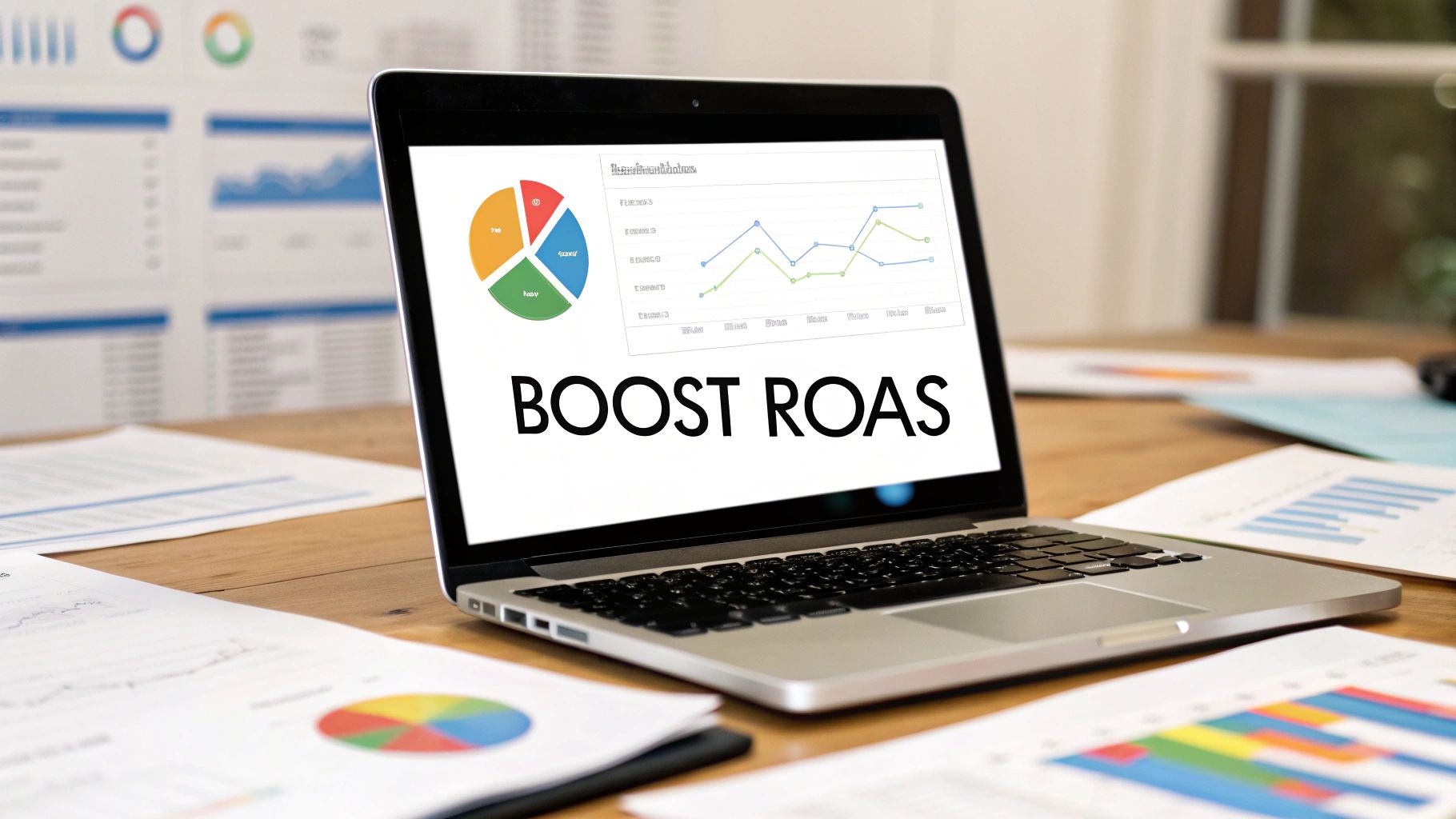
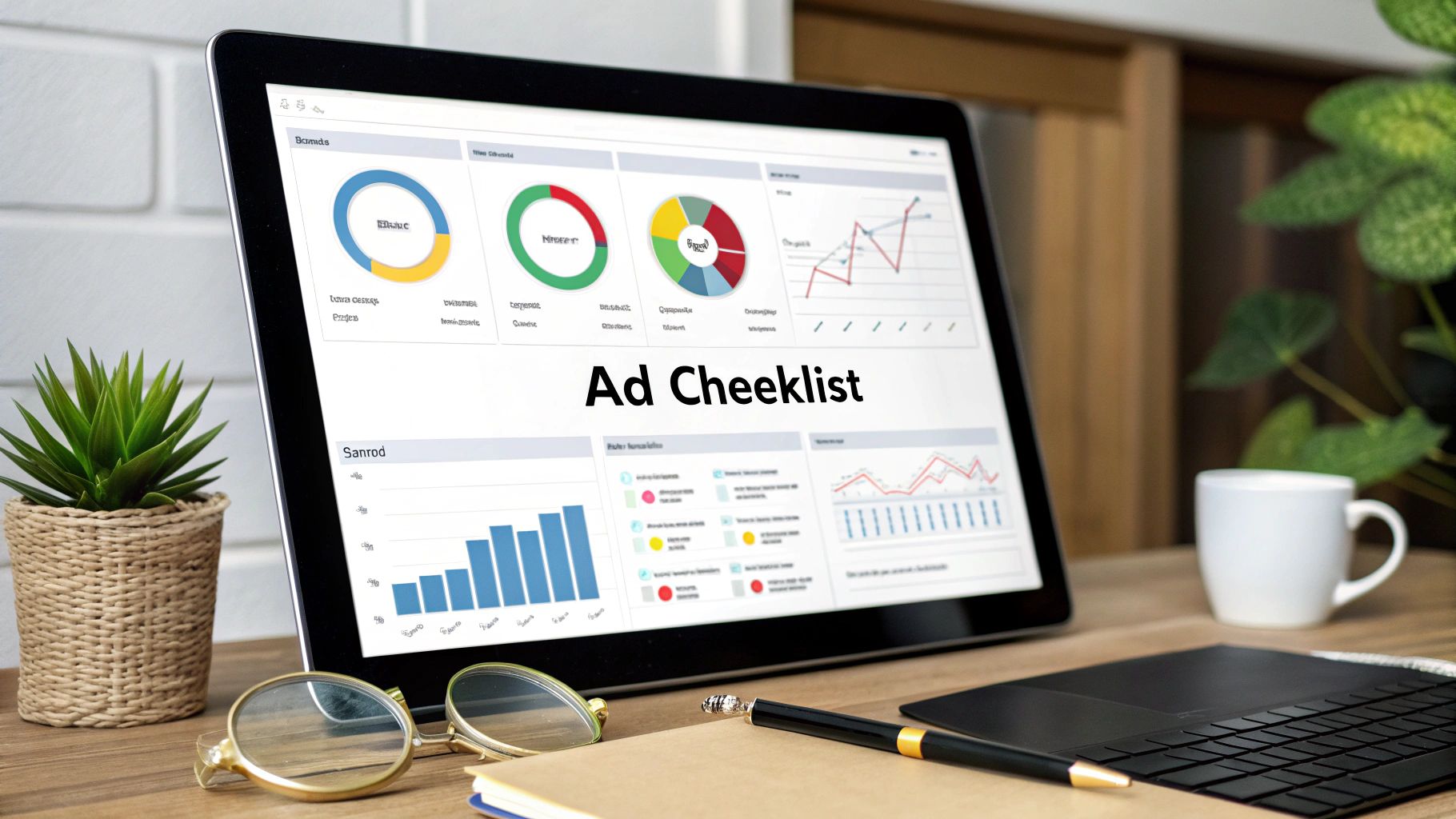







Comments